Cash posting is a key task in accounting and finance. It means recording payments that come in, matching them to the right invoices, and syncing them back to the ERP or accounting system. While it sounds simple, doing it manually can take a lot of time and often leads to mistakes.
In this article, we’ll explain what cash posting is, why it matters, and how automation can make it faster and easier.
What is Cash Posting?
Cash posting is the process of recording and applying incoming payments to customer accounts or invoices and reconciling them back to ERP or accounting software. This means updating the accounting records to show that a payment has been received and making sure the payment is matched to the correct invoice or account receivable. It helps keep financial records accurate and ensures customer payments are properly recorded.
When a customer makes a payment—whether by check, credit card, or any other method—the company needs to record it in their accounting system. This process involves updating the accounts receivable ledger to reflect the payment and matching it to the specific invoice or account it corresponds to.
For example, if a customer pays for a service, the payment should be marked as received and applied to that specific invoice. This ensures that the company’s financial records accurately reflect its income and liabilities.
Who is Responsible for Cash Posting?
The cash application specialist in the accounts receivable team is usually responsible for cash posting. Their job includes receiving and recording payments, handling refunds, and adjusting customer invoices.
Why is Cash Posting Important?
Accurate cash posting is crucial for several reasons:
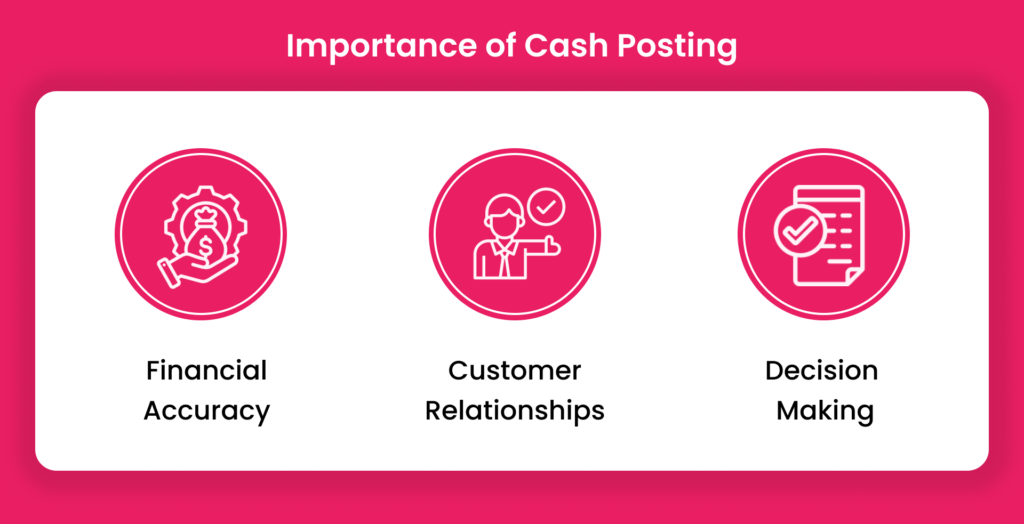
Financial Accuracy
Proper cash posting is key to keeping financial records accurate. It ensures that the company’s cash flow and financial position are correctly recorded. By accurately logging payments and matching them to the right invoices or accounts, businesses can avoid mistakes in their financial reports and get a clear view of their financial health.
Customer Relationships
Reconciling cash on time and accurately is key to keeping good relationships with customers. When customers make payments, they expect them to be recorded quickly and correctly. Doing this gives customers clear updates on their payment status and helps avoid disputes or confusion. This builds trust and boosts customer satisfaction and loyalty.
Decision Making
Accurate posting gives clear insights into a company’s financial health, helping leaders make smarter decisions. With up-to-date information on cash flow and receivables, companies can better plan how to use resources, explore investment opportunities, and shape their financial strategy. This makes it easier to spot areas for improvement, take advantage of growth opportunities, and handle challenges more effectively.
Steps in the Cash Posting Process
Let’s dive into the steps involved in cash posting:
1. Get payment from the customer, like cash, check, or card.
2. Match the payment with the right customer account by checking invoices or balances.
3. Write down the payment amount, date, method, and other important info in the accounting system.
4. Put the payment towards the correct customer account to update the accounts receivable ledger.
5. Check the ledger to ensure all payments are recorded correctly and fix any mistakes.
6. Contact customers with outstanding balances to collect payments and update records.
By following these steps, businesses can keep their cash posting process accurate and efficient, reducing errors and improving financial health.
What Documents Are Involved in Posting Cash?
Cash posting involves several documents, including invoices, remittance advice, and bank statements.
Invoices show the products or services provided, the amount owed, payment instructions, and due dates. Remittance advice comes with payments and gives extra details to help identify the purpose of the payment and match it to the correct invoice and account in the general ledger. The bank statement shows the actual payments made, helping to verify and match the cash transactions with the records.
What are the Challenges of Manual Cash Posting?
Manually posting cash is a time-consuming task that involves getting payment information, finding the right invoices or accounts to match, and entering the payment details into the accounting system. This is usually done using spreadsheets or by typing directly into accounting software, which can lead to mistakes and take up a lot of time. Some common problems with manual cash posting include:
1. Errors and Reconciliation Issues
Manual data entry can cause mistakes like payments being assigned to the wrong accounts, invoices not matching correctly, and differences between payment records and accounting entries. These errors can lead to incorrect financial statements and problems with reconciliation.
2. Time-Consuming Process
Manual processes can be a time-consuming process, especially for organizations with a high volume of transactions. This can lead to delays in updating financial records and reporting, impacting decision-making and cash flow management.
3. Limited Scalability
Manual cash posting is not practical, especially for growing organizations or those with many transactions. As the number of transactions rises, the manual process becomes slower and more likely to cause mistakes.
4. Lack of Visibility
Manually posting cash can make it hard to see the cash flow and payment status. This makes it difficult to track unpaid invoices, which can cause delays in collecting payments.
5. Incomplete Payment Information
When customers don’t provide enough or clear remittance details, it’s hard for the accounts receivable team to match payments with the right invoices. This causes delays and increases the chances of mistakes.
6. Diverse Remittance File Formats
Managing various remittance formats (e.g., emails, PDFs, web portals) poses a challenge for AR teams, requiring manual effort to consolidate data, which can lead to inefficiencies and errors.
7. Dispute Resolution Complexity
Resolving payment disputes, including deductions and overpayments, requires meticulous review and communication with customers. Lack of clear information and documentation prolongs the resolution process, impacting cash posting efficiency.
What are the Key Best Practices to Manage Cash Posting?
Following the below listed best practices can help businesses streamline their cash posting processes, reduce errors, and improve overall efficiency and accuracy in handling payments.
- Establish clear and consistent procedures for receiving, recording, and reconciling payments to ensure accuracy and efficiency.
- Separate responsibilities for receiving, recording, and reconciling payments to prevent fraud and errors.
- Reconcile accounts regularly to ensure all payments are accurately recorded and any discrepancies are promptly addressed.
- Track metrics such as cash posting accuracy, processing time, and outstanding balances to identify areas for improvement.
- Keep customers informed about their account balances and payment statuses to maintain positive relationships and reduce inquiries.
- Utilize cash application solutions to automate repetitive tasks, such as matching payments to invoices, to improve efficiency and reduce errors.
What are the Benefits of Cash Posting Automation?
Automating the cash posting process is essential for efficiency, and a cash application solution can help achieve this goal. Here are some benefits of automating your cash application process:
- Efficiency: Automation speeds up cash application, reducing manual work and letting staff focus on more important tasks.
- Accuracy: Automated systems lower the chance of mistakes, ensuring better and more accurate accounting records.
- Faster Processing: Automation helps post and reconcile payments quickly, improving cash flow and reducing the risk of missed or late payments.
- Cost Savings: With less manual work and better efficiency, businesses can save money on labor costs for cash posting.
- Better Cash Flow Management: Automation gives real-time updates on cash positions, helping businesses make smarter decisions about cash flow.
- Better Customer Experience: Faster and more accurate payment posting leads to fewer errors and quicker updates on account balances, making customers happier.
How Peakflo Helps to Streamline Cash Posting Process?
Streamline your operations and enhance customer satisfaction with Peakflo’s Cash Application Automation solution. Peakflo streamlines the cash posting process by offering several key features.
- Say goodbye to manual bank feed imports with Peakflo. Seamlessly integrate with all major banks to sync your bank transactions in real-time, saving time and reducing errors for your finance team.
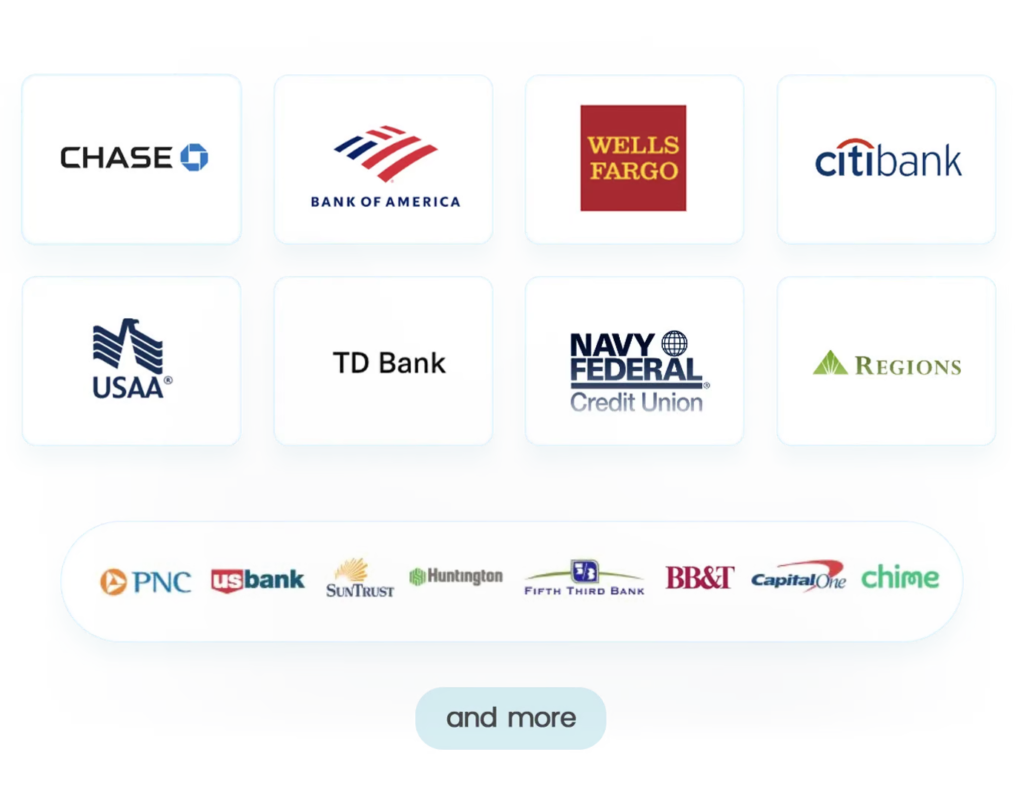
- With Peakflo’s AI-powered remittance extraction, the system will automatically extract payment details from emails, PDFs, CSV, XLS files, or even cheques.
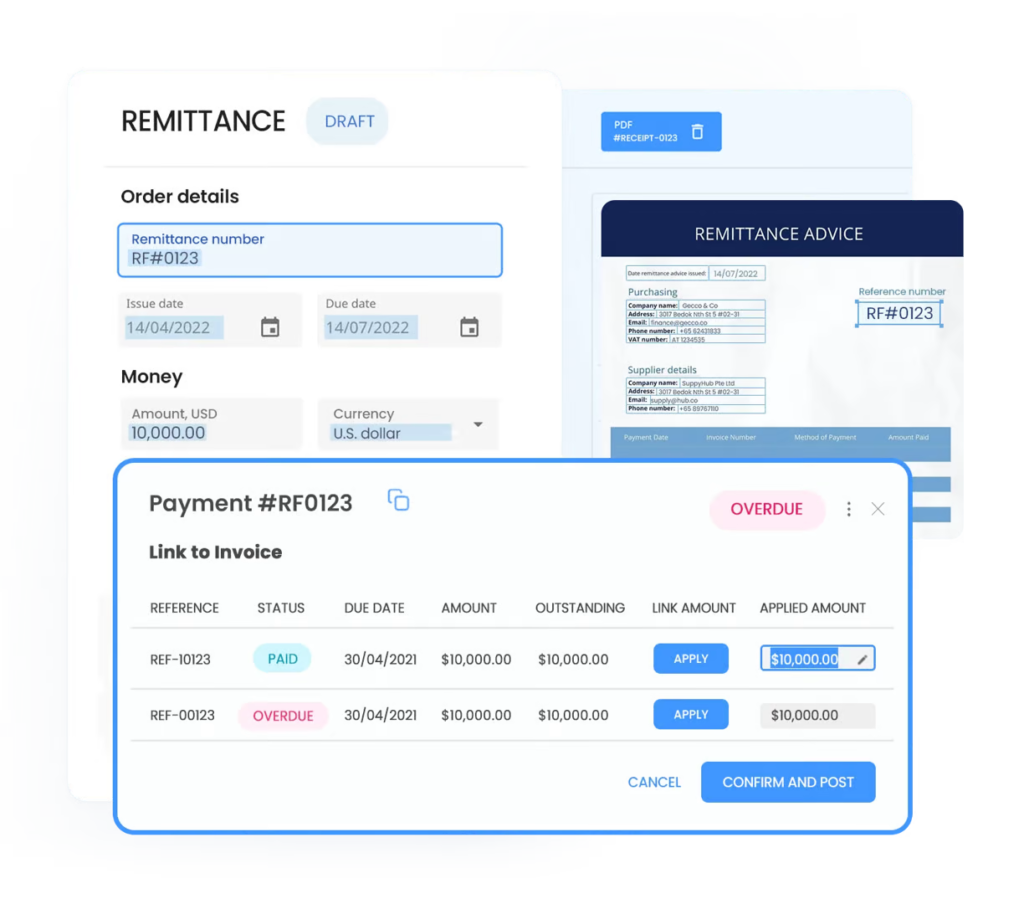
- With Peakflo, streamline your 3-way matching process by automating the comparison of remittance details, invoices, and bank statements. This reduces manual effort, enhances accuracy, and quickly flags mismatches, allowing your finance team to focus on higher-value tasks.
- Integrates seamlessly with ERPs and accounting software, ensuring that all cash postings are accurately reflected in your accounting records in real-time.
- Allows customers to view and apply payments to invoices directly through Peakflo’s Customer Portal. This reduces the need for back-and-forth communication and streamlines the cash posting process.
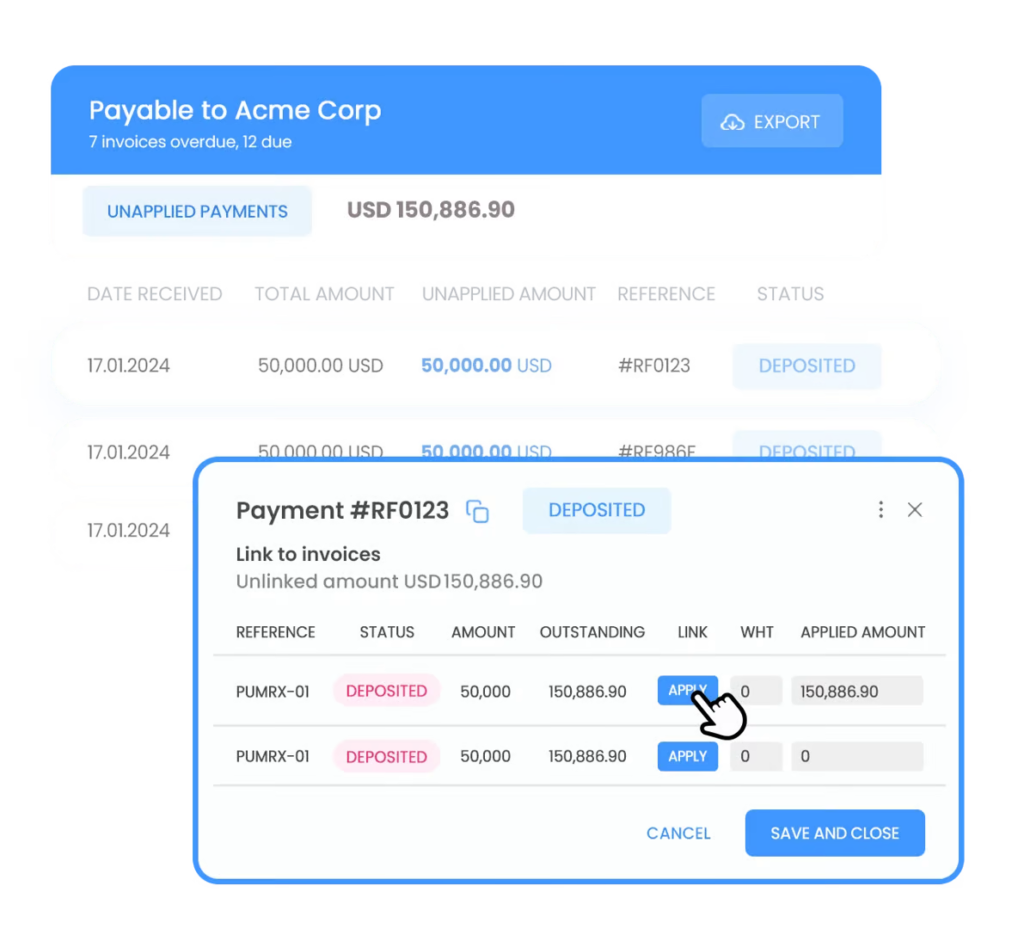
- Enables automated payment reminders to customers for unapplied payments, prompting them to apply the payments through the customer portal.
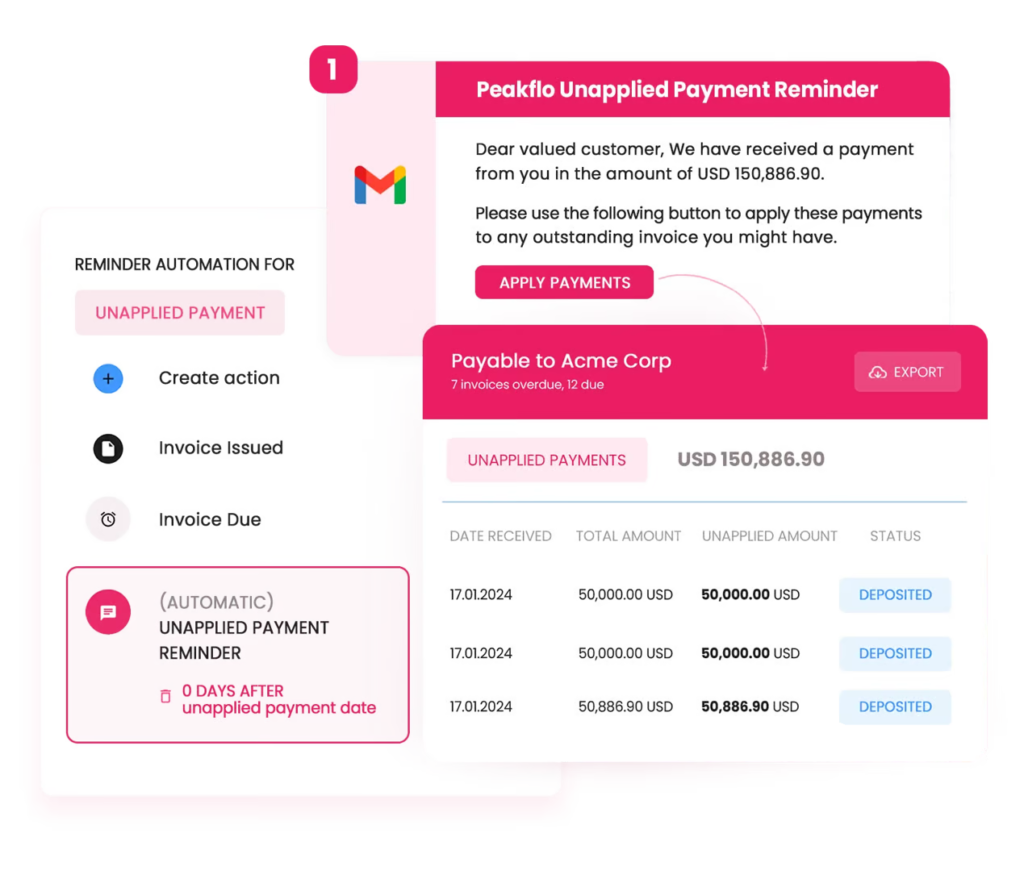
- Provides visibility and tracking of transactions, allowing you to monitor and manage the cash posting process easily.










![Why AI Sales Calls Are Making Good Sales Reps Even Better [2025 Guide] ai sales calls](https://blog.peakflo.co/wp-content/uploads/2025/09/65168cf6-3001-4733-8cbc-12d5684cf449-218x150.webp)


































